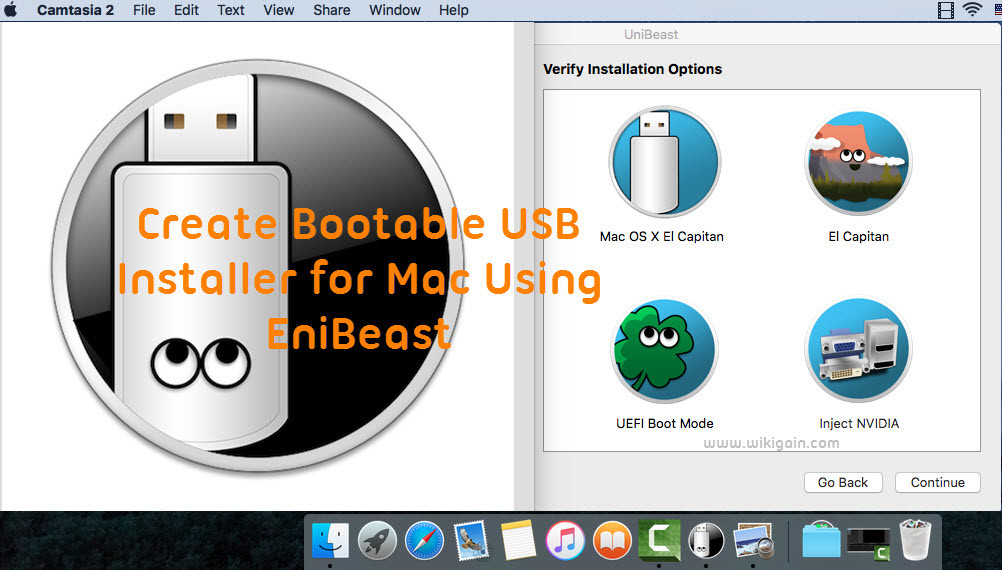- Create A Bootable Mac Os X Usb Drive In Ubuntu
- Create Bootable Mac Os X Usb Drive
- Create Bootable Mac Os X Usb Using Windows
- Create Bootable Mac Os X Lion Usb
The Mac OS X drive can be used to install OS X on other Macs or upgrade them to the latest version without any long downloads. From a Windows ISO for Mac. RELATED: How to Install Windows on a Mac With Boot Camp. If you plan on installing Windows on a Mac via Boot Camp, don’t bother creating a bootable USB drive in the usual way. Why Make a Bootable USB Installer. A bootable installer for OS X El Capitan is a good idea even if your plan is to perform an upgrade install. Having your own copy of El Capitan on a separate device ensures that you'll always be able to install or reinstall it. It also helps in performing basic troubleshooting tasks, even if you have no. A bootable USB drive can be used to install a new operating system, as well as for using tools such as GParted. The former is the more popular use of a bootable USB drive though. Chrome OS doesn’t have many (or any, in fact) third-party tools to create bootable recovery media. When OS X shipped on a DVD a good number of years ago, you always had the convenience of a bootable installer—an OS X installer that could be used to boot your Mac if its own drive was having.

Create A Bootable Mac Os X Usb Drive In Ubuntu
With a bootable Ubuntu USB stick, you can:
- Install or upgrade Ubuntu, even on a Mac
- Test out the Ubuntu desktop experience without touching your PC configuration
- Boot into Ubuntu on a borrowed machine or from an internet cafe
- Use tools installed by default on the USB stick to repair or fix a broken configuration
Create Bootable Mac Os X Usb Drive

Create Bootable Mac Os X Usb Using Windows
Creating a bootable USB stick is very simple, especially if you’re going to use the USB stick with a generic Windows or Linux PC. We’re going to cover the process in the next few steps.
Create Bootable Mac Os X Lion Usb
Apple hardware considerations
There are a few additional considerations when booting the USB stick on Apple hardware. This is because Apple’s ‘Startup Manager’, summoned by holding the Option/alt (⌥) key when booting, won’t detect the USB stick without a specific partition table and layout. We’ll cover this in a later step.

